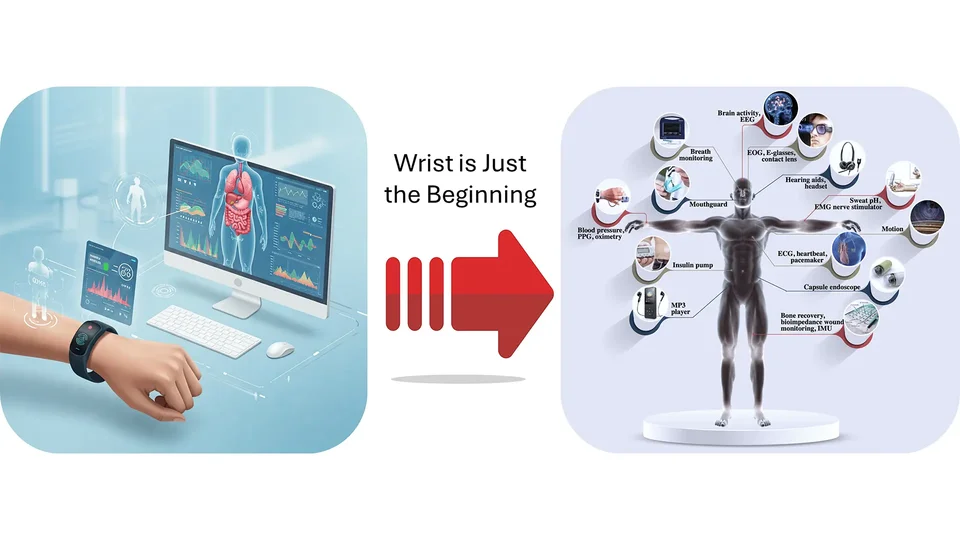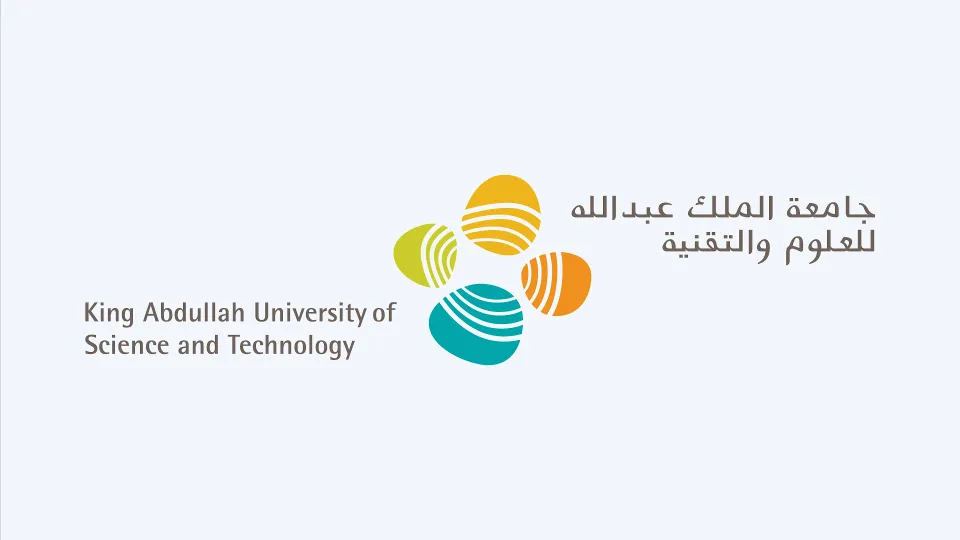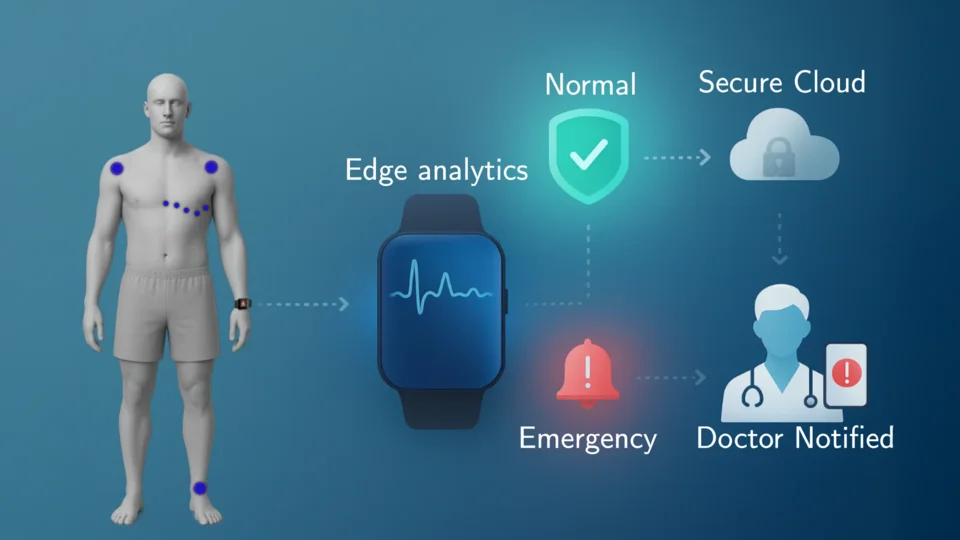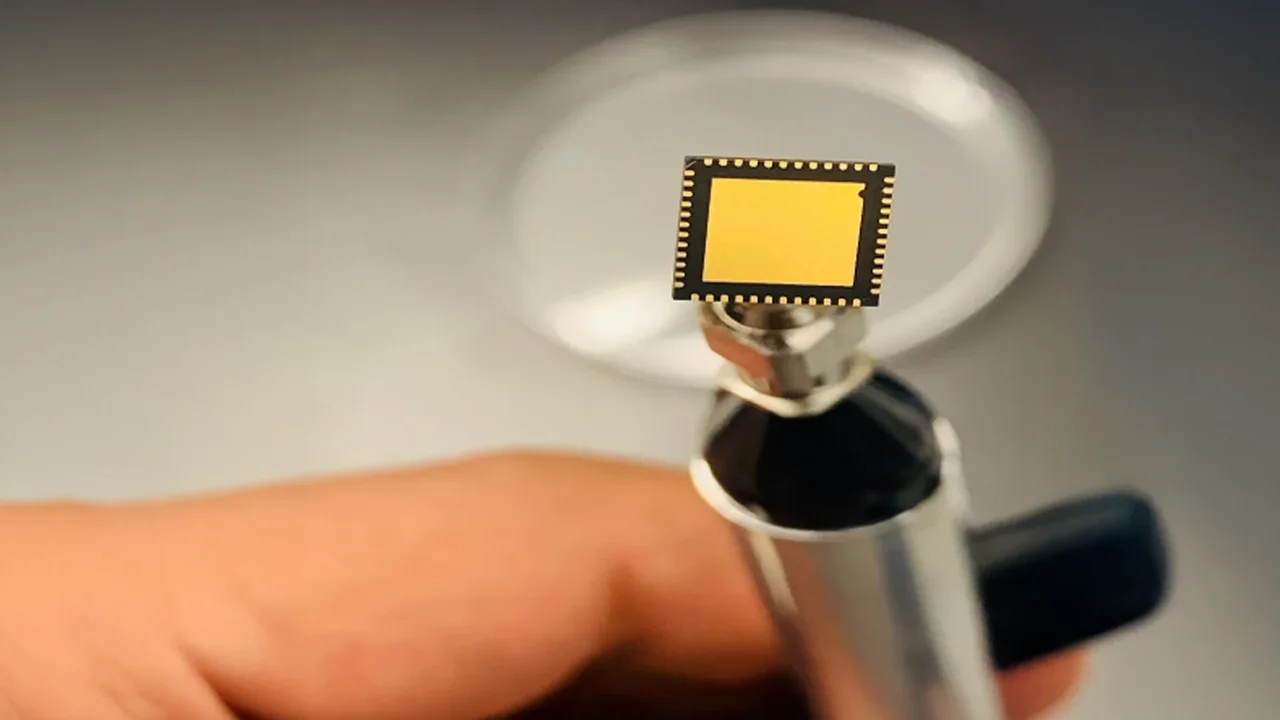
Ultra-Low-Power HBC Transceiver ICs
Overview
The CCSL advances next-generation Human Body Communication (HBC) through innovative ASIC implementations that enable ultra-low power, secure, and efficient data transmission using the human body as a communication medium. Our research focuses on silicon-proven solutions that bridge the gap between theoretical HBC concepts and practical wearable/implantable applications. We develop mixed-signal transceivers that support multiple communication modes, adaptive signal processing, and AI-enhanced performance optimization. The lab's ASIC implementations demonstrate >100x energy efficiency improvements over conventional RF solutions while maintaining 10x smaller form factors, making them ideal for Internet of Bodies (IoB) applications including distributed biosensing, medical monitoring, and entertainment systems.
HBC 1 - AI-Enhanced Digital Communication Chip
The HBC 1 chip represents a breakthrough in intelligent HBC systems, integrating autoencoder-based AI techniques to overcome noise and signal degradation challenges in body communication channels. Fabricated using TSMC 65nm LP technology, this chip features dynamic learning capabilities that adapt to variable electrical characteristics and interference within the human body.
Key Features:
- Broadband & Narrowband Communication: Supports both baseband transmission and EQS band narrowband methods
- AI-Driven Adaptability: Autoencoder functions as modulator and encoder with dynamic optimization
- Flexible Data Rates: 1 Kbps to 13.5 Mbps with 27 MHz clock frequency
- Multiple Carrier Support: 100 kHz to 13.5 MHz carrier frequencies
- Ultra-Low Power Design: Optimized for energy-efficient wearable applications
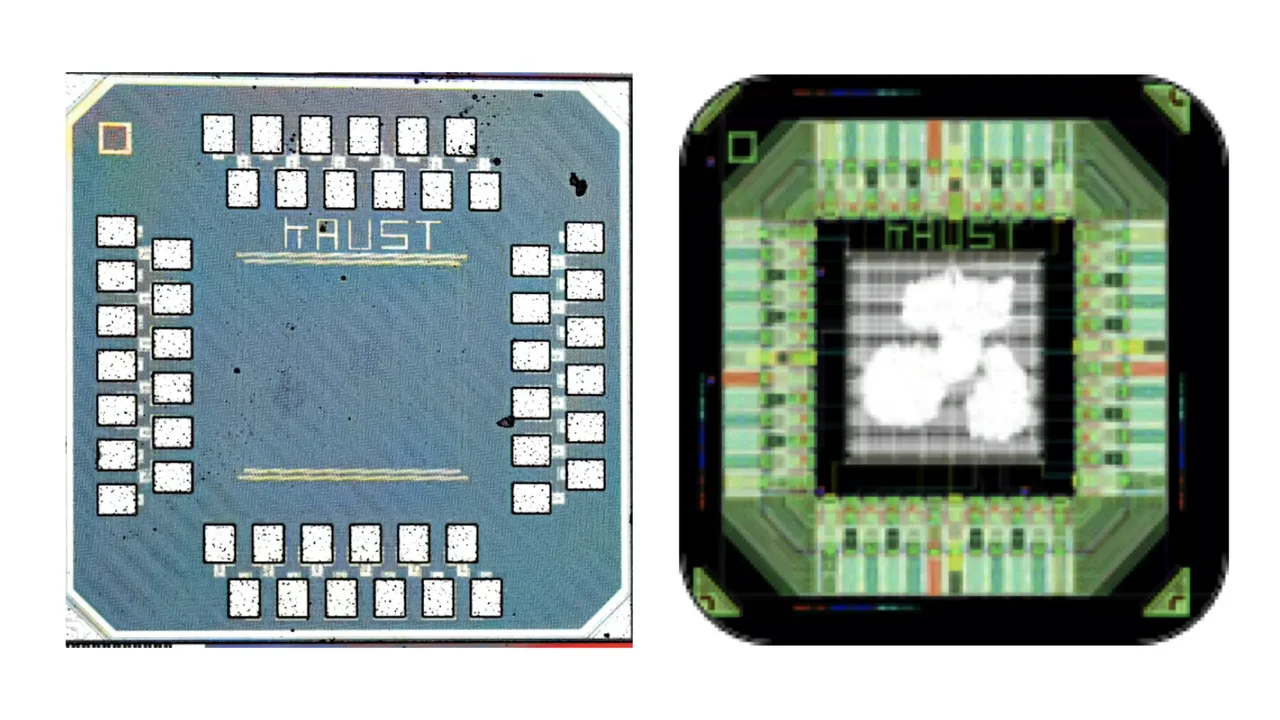
HBC 2 - Mixed-Signal Transceiver with Embedded MCU
The HBC 2 chip advances HBC technology through complete mixed-signal integration, featuring an on-chip 8-bit microcontroller and comprehensive analog front-end. This versatile platform enables intelligent and adaptive HBC systems with CGAN-assisted fine-tuning capabilities.
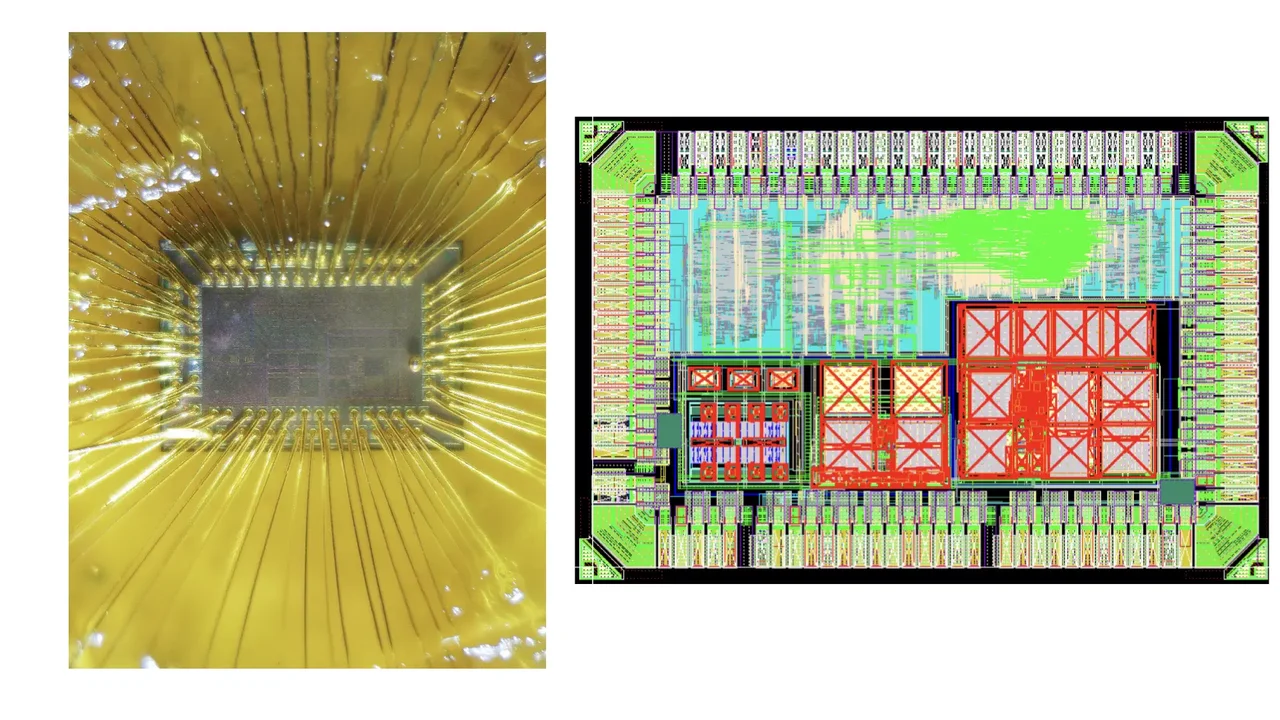
- Complete Analog Front-End: Preamplifier, envelope detector, post amplifier, comparator, and 3-bit ADC
- Embedded Processing: 8-bit MCU at 42 MHz with full instruction set support
- Flexible I/O: 7 general-purpose ports (P0-P6) with UART programming interface
- Dual Communication Modes: Both narrowband and broadband support
- Memory: Up to 1024 bytes volatile memory
- Programming: C++ (SDCC) compatible development environment
- Applications: Optimized for wearable and biomedical applications
Copyright
The data and results presented in this work are protected by copyright and may only be used with proper citation. Any use of this work should reference the following papers:
- Ali, Abdelhay, et al. "Autoencoder-Based Transceivers for Multiple Access Human Body Communication Networks." IEEE Transactions on Circuits and Systems I: Regular Papers (2025).
- A. Ali, A. N. Abdelrahman, A. Celik, M. E. Fouda, and A. M.Eltawil, “A robust autoencoder HBC transceiver with cgan-based channel modeling,” IEEE Sensors Journal, vol. 25, no. 9, pp. 15 935–15 949,2025
- A. N. Abdelrahman, A. Ali, M. Ali, A. Hassan, A. Celik, and A. M. Eltawil, “An adaptive dual-mode HBC transceiver for medical and entertainment applications,” in 2025 IEEE Biomedical Circuits and Systems Conference (BioCAS), 2025, pp. xx–xx.




